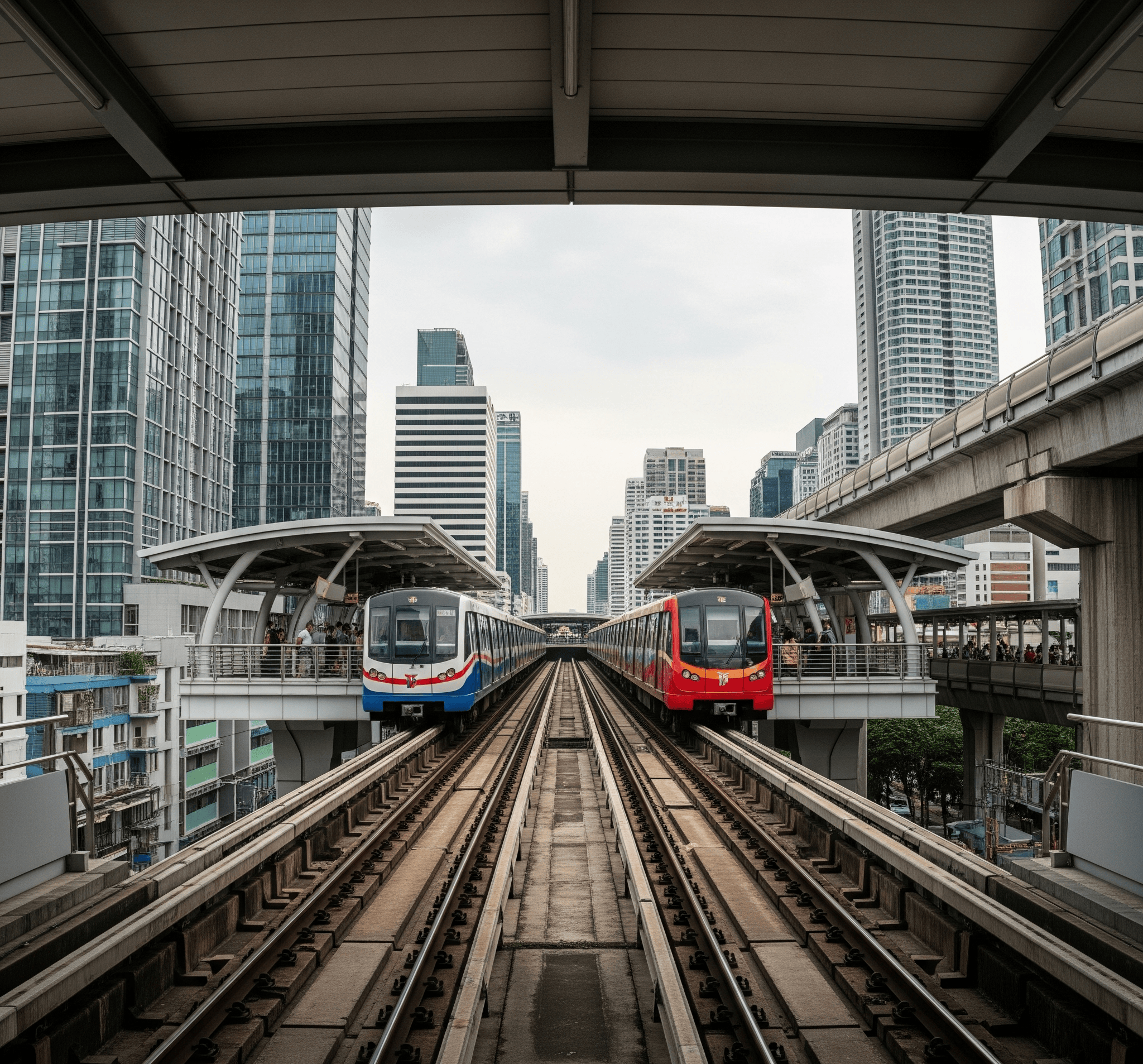Bangkok's BTS Skytrain: A Tourist's Easy Guide
Navigating a new city can be daunting, especially one as vibrant and sprawling as Bangkok. But fear not! Bangkok's BTS Skytrain is an incredibly efficient and easy-to-use system that can whisk you across the city quickly and affordably. This guide will equip you with everything you need to master the BTS, ensuring a smooth and stress-free trip.
Understanding the BTS Skytrain System: Lines, Stations & Zones
The BTS Skytrain consists of two main lines: the Sukhumvit Line (green) and the Silom Line (blue). These lines intersect at several stations, allowing for easy transfers between them. The city is divided into zones, with fares increasing based on the distance traveled. You'll see zone numbers clearly displayed at each station. Knowing your starting and ending zones is key to calculating your fare.
A helpful tip: download the BTS Skytrain map app or find a physical map at any station. These maps clearly show all stations, lines, and connecting points to other transportation like the MRT subway.
Buying a Rabbit Card: Your Key to Easy BTS Travel
Forget fumbling with cash at every station! The Rabbit Card is a rechargeable travel card that makes your BTS journey significantly smoother. It's like having a Bangkok transit pass. You can purchase a Rabbit Card at any BTS station for 200 THB (approximately $5 USD, prices may vary slightly). This includes a 100 THB deposit, which is fully refundable when you return the card. You then top up the card with your desired amount of travel credit.
- Step 1: Find a Rabbit Card vending machine at any BTS station.
- Step 2: Follow the simple on-screen instructions (usually available in English).
- Step 3: Insert your cash and receive your card.
- Step 4: Top up your card at the machine or at a service counter.
Topping up is easy – just find a top-up machine and follow the instructions. Keeping a sufficient balance ensures a seamless ride. For longer trips or if you anticipate using the BTS extensively, consider loading a larger amount.
Navigating BTS Stations: Finding Your Way with Maps and Signage
Bangkok's BTS stations are generally well-designed and easy to navigate. Each station has clear signage indicating platform directions and exits. Look for large digital displays showing train arrival times and platform numbers.
- Tip 1: Check your destination on the map before you arrive at the station.
- Tip 2: Follow the directional signage carefully; it usually includes English translations.
- Tip 3: Don't hesitate to ask station staff for assistance if needed – most are friendly and helpful.
Decoding BTS Ticket Prices: Calculating Fares and Avoiding Overpayment
BTS fares are calculated based on the distance traveled (the zones). You can check the fare on the ticket machines or by using the BTS Skytrain app. Remember to factor in the additional cost if you’re transferring to the MRT.
Example: A journey from Siam Station (a major interchange) to Asok Station on the Sukhumvit Line might cost around 20-30 THB (approximately $0.50-$0.75 USD), depending on the time of day and potentially fluctuating prices. Always check the indicated price before you proceed with payment.
Connecting to Other Transport: Seamless Transfers to MRT & Ferries
The BTS seamlessly connects with the MRT subway at several stations, such as Siam and Asok. This offers excellent connectivity across Bangkok. Signage at these interchange stations clearly indicates the way to the MRT platforms. You can even connect to river ferries at certain points, adding another layer of convenient transportation options.
Transferring between BTS and MRT often requires purchasing a separate ticket or using your Rabbit card, depending on the system. Always check the fare and proceed accordingly.
Avoiding Common BTS Mistakes: Rush Hour, Scams, and Lost Tickets
Rush Hour: Avoid traveling during peak hours (7:00 AM - 9:00 AM and 5:00 PM - 7:00 PM) if possible, as trains can get extremely crowded. Planning your travel outside these times is highly recommended.
Scams: Be aware of potential scams, especially around ticket machines. Stick to official machines and be cautious of anyone offering unsolicited assistance. If you have any doubts, consult a station attendant.
Lost Tickets: Keep your ticket until you exit the station to avoid penalties. If you lose your Rabbit card, report it immediately to minimize potential misuse.
Best BTS Routes for Tourists: Popular Destinations & Efficient Travel Planning
The BTS provides access to many of Bangkok's top tourist attractions. Planning your itinerary around the BTS can save you significant travel time and hassle.
- Siam Paragon/CentralWorld: Major shopping malls, easily accessible from the Siam BTS Station.
- MBK Center: Another large shopping mall, accessible from the National Stadium BTS Station.
- Wat Arun (Temple of Dawn): While not directly accessible by BTS, you can take the BTS to Saphan Taksin Station and then a ferry across the Chao Phraya River.
- Chatuchak Weekend Market: The BTS does not directly serve Chatuchak, however, the MRT does. You might find it easier to use the MRT and transfer to the BTS at a connecting station.
For more complex multi-day itineraries involving multiple modes of transport, consider using a service like My Thai Buddy to help with detailed planning and scheduling.
Mastering the BTS: Your Key to Exploring Bangkok
With a little preparation and this guide, navigating Bangkok's BTS Skytrain will be a breeze. Remember your Rabbit card, check the station maps, and avoid rush hour if possible. Happy travels!
Want to delve deeper into Bangkok's transportation options? My Thai Buddy can provide personalized guidance for even more tips and tricks to make your trip unforgettable.
Facing a particularly complex travel plan? My Thai Buddy can assist with detailed itinerary creation, ensuring a seamless and enjoyable experience. Their services are particularly helpful for those who prefer a more personalized touch to their trip planning.


